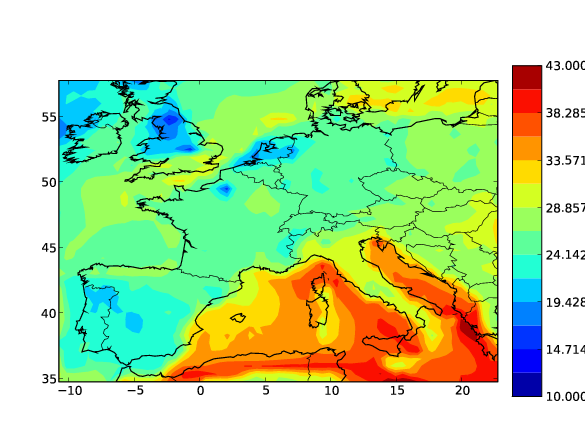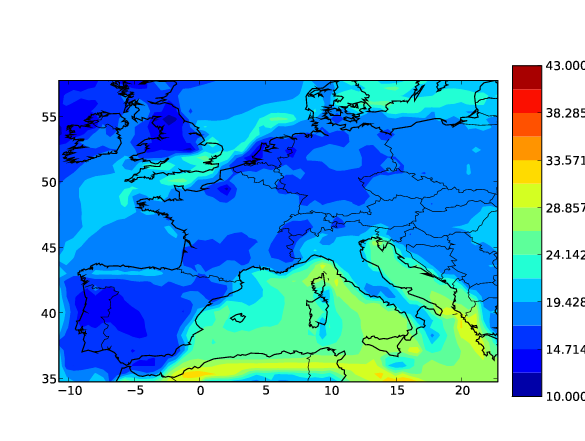Section: New Results
Ensemble methods
Due to the great uncertainties that arise in air quality modeling, relying on a single model may be not sufficient. Therefore ensembles of simulations are now considered in a wide range of applications, from uncertainty estimation to operational forecast.
Uncertainty estimation based on multimodel ensembles and Monte Carlo simulations
Participants : Damien Garaud, Vivien Mallet, Raphaël Périllat, Irène Korsakissok [IRSN] , Denis Quélo [IRSN] .
Air quality forecasts are limited by strong uncertainties especially in the input data and in the physical formulation of the models. There is a need to estimate these uncertainties for the evaluation of the forecasts, the production of probabilistic forecasts, and a more accurate estimation of the error covariance matrices required by data assimilation.
Because a large part of the uncertainty in the forecast originates from uncertainties in the model formulation (primarily the physical parameterizations), a multimodel ensemble seems to be the adequate tool for uncertainty estimation. Several 100-member ensembles were generated and calibrated (based on observations – see the example in Figure 4 ) over year 2007 in order to study the impact of EDF thermal plants on air quality. The ensemble simulations were carried out at European scale and at the scale of French regions so as to study the local impact of two EDF plants. This approach allowed us to estimate the uncertainty on the simulated impact of the plants. Based on the calibrated ensembles, we also computed probabilistic forecasts for threshold exceedences.
Specific work has been carried out to decompose the discrepancy between observations and model simulations in three errors: the modeling error, the representativeness error and the observational error. It was shown that the representativeness error might account for a third of the discrepancy.
After the Fukushima nuclear disaster, we worked on uncertainty estimation of the transport simulations at Japan scale. We carried out Monte Carlo simulations with perturbations on most input parameters. The first results showed that the variability of the ensemble simulations is great enough to reasonably sample the uncertainties after a calibration.
|
Aggregation of meteorological forecasts
Participants : Anne Tilloy, Vivien Mallet, Fabien Brocheton [Numtech] , David Poulet [Numtech] .
Nowadays it is standard procedure to generate an ensemble of simulations for a meteorological forecast. Usually, meteorological centers produce a single forecast, out of the ensemble forecasts, computing the ensemble mean (where every model receives an equal weight). The generation of a single forecast with a weighted linear combination is called sequential aggregation. Each time new observations are available, the weights of the linear combination are updated and applied for the next forecasts. We applied the discounted ridge regression algorithm, which we previously introduced for sequential aggregation of air quality forecasts, to forecast wind and temperature at given observation stations. The ensemble was generated with forecasts at different range from two models. The aggregation proved to be efficient for one-day forecasts at least.




